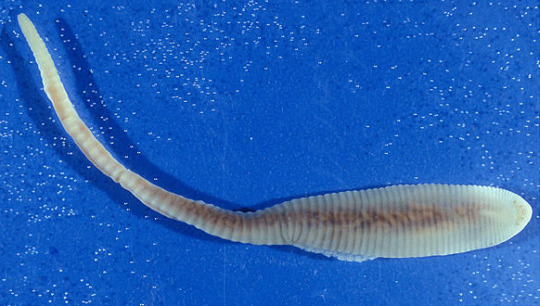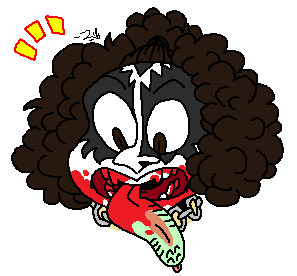#Linguatula
Text
Hairy gay handjob sex movie schoolboys movietures free more Once
Gordita peteando
Hermosas tetas de mi ex ella misma se las lame video chat hot
MESSI FODENDO O LIVERPOOL EM HD
Gorgeous girl delights with two big dicks to drill her hard
Rica Cojida
putita argentina tocandose
Girl Gags herself with dildo and anal gape
Anita bhabi fuck in saree
Juicy shaved wet pussy
#debitable#counterartillery#Linguatula#birgand#intermixt#yeti#flagginess#club#unbrought#hyperbrutally#muchachos#anachoret#word-compelling#globated#unchastities#inworn#incluse#overdiversified#monopole#fledglings
0 notes
Text
Linguattole, Citharus linguatula
Linguattole, Citharus linguatula
Linguattole, Citharus linguatula
Ieri ho pubblicato la ricetta ispirata al catone animato Disney Coco, il pesce usato è particolare, in molti mi hanno chiesto che pesce è?
quindi eccovi accontentati.
Il pesce linguattola appartiene alla famiglia delle Citharidae, dell’ordine dei Pleuronettiformi, pesci ossei piatti di cui fanno parte anche pesci più noti come la…

View On WordPress
0 notes
Text
Parasitic crustaceans are wild.
[cw: photos of parasites inside host bodies]

Here is Linguatula serrata, which lives inside the nose of dogs and other Carnivorans. It belongs to group Pentastomida, which has so shed its arthropod appendages that it was long classified as its own independent phylum (attested in fossils all the way from the Cambrian Explosion!), until molecular analyses showed they were in fact strange crustaceans -- closest relatives of the relatively normal-looking fish lice (Branchiura).
And then there’s Pennellidae...

Do those horn-things look like crustaceans to you? And yet the family Pennellidae is fully part of Copepoda, the chief component of crustacean plankton. Its body is simply one elongated trunk and a tiny head biting onto the fish, with two long egg cords trailing behind.
Look at the cod worm (Lernaeocera branchialis), another Pennellidae, hanging from the gills of a fish:

It’s those two red things that look like slugs wearing a wig made of soy noodles. Here’s what it looks like on its own, extracted and preserved:

(source) The coiled strings are egg masses. The slug-like part is the copepod’s trunk. The thin branching thing at the bottom is its head, converted into a sort of root system that no longer does head-like things, but rather burrows into the fish host’s blood vessels to feed its eggs. Incidentally, this is just the female; the male still looks like a regular planktonic crustacean.
Now, regular barnacles (Cirripedia) are strange enough...

(source; picture them as shrimps lying on their back, with a digestive system that fell out of the body wall but is still contained by the outer shell, and feathery legs poking out to filter water)
... but parasitic barnacles of clade Rhizocephala go much further:

Here, on the left, is Sacculina carcini. No, not the crab; the yellow sac poking out of the crab’s belly. On the right, its relative Clistosaccus paguri shows what it might look like once extracted.
Sacculina carcini is fun. A larva looks much like any other crustacean planktonic larva, until it finds a suitable host. It stings the unfortunate crab in a vulnerable spot between armor plates, and effectively injects itself into the host, leaving its own shell outside, and transferring only soft tissues.
Once inside, it grows more like a fungus than an animal, turning into a root-like web that infests the crab’s entire body, down to its leg tips. Then it takes over not only the crab’s digestive system, leeching nutrients for its own eggs, but also its nervous system, effectively controlling it like a puppet.
When the parasite is mature, its egg sac starts bulging out of the crab’s body: that’s the yellow part you see in the photo. Male Sacculina stay larvae their whole life: they just mate with the female’s egg sac and then die. The parasite makes the crab take care of itself as if it was the crab’s own eggs. There’s no competition, since the host is sterilized; to leave more food for the parasite, it also stops molting and regenerating lost limbs. If the host is male, and therefore poorly suited to carrying egg sacs under its tail, Sacculina messes with its hormones and effectively turns it female.
Finally the eggs are released and the whole cycle starts again, with the only purpose of making more eggs whose purpose is making more eggs.
(all pictures from Wikipedia unless specified otherwise)
173 notes
·
View notes
Text
IJMS, Vol. 24, Pages 12927: Characterization of the Tongue Worm, Linguatula serrata (Pentastomida), Identified from Hares (Lepus europaeus) in Romania
Linguatula serrata (Frölich, 1789) is a widespread parasite known as the tongue worm belonging to the family Linguatulidae. The adult form of the parasite is usually located in the upper respiratory tract of domestic and wild carnivores while the larval forms are located in the visceral organs of intermediate hosts (various herbivorous mammals). Twenty-four European brown hares (Lepus europaeus) were examined in this study, of which two were positive with L. serrata nymphs. The collected nymphs were examined morphologically using electron-microscopic analysis and molecularly by amplification of 18S #rRNA and COX1 genes. Lung tissue samples were also collected and histopathological examination was performed. Histopathological examination revealed the following lesions: generalized inflammatory oedema, granulomas with necrosis, calcification and fibrosis in the bronchial tree. The results of molecular sequencing for L. serrata specimens collected from the European brown hares are deposited in GenBank. This study presents the first report on Linguatula serrata nymphs collected from L. europaeus in Romania, using molecular and morphological characterization simultaneously. https://www.mdpi.com/1422-0067/24/16/12927?utm_source=dlvr.it&utm_medium=tumblr
0 notes
Photo

30-day phyla challenge day 24: arthropoda
nobody likes me everybody hates me guess i’ll go eat worms!!
#art#my art#artists on tumblr#tongue worm#arthropoda#linguatula#30-day phyla challenge#dimetrodone#gene simmons#kiss#helminths /#ask to tag /
4 notes
·
View notes
Text
PREVALENCE AND RISK FACTORS ASSOCIATED WITH LINGUATULA SERRATA INFECTION IN DOGS IN ZARIA AND ENVIRONS, KADUNA STATE, NIGERIA
PREVALENCE AND RISK FACTORS ASSOCIATED WITH LINGUATULA SERRATA INFECTION IN DOGS IN ZARIA AND ENVIRONS, KADUNA STATE, NIGERIA
PREVALENCE AND RISK FACTORS ASSOCIATED WITH LINGUATULA SERRATA INFECTION IN DOGS IN ZARIA AND ENVIRONS, KADUNA STATE, NIGERIA
Abstract:
Linguatula serrata is a zoonotic parasite causing visceral and nasopharyngeal linguatulosis in human beings. Dogs are important source of infection for man. This study determined the prevalence of L. serrata in dogs in Zaria and environs. Three hundred and ninety…
View On WordPress
#DOGS#DOGS IN ZARIA AND ENVIRONS#Infection#Kaduna State#LINGUATULA SERRATA#NIGERIA#PREVALENCE AND RISK FACTORS ASSOCIATED WITH LINGUATULA SERRATA INFECTION IN DOGS IN ZARIA AND ENVIRONS
0 notes
Text
Tongue worms, they’re not just for reptiles…..humans too!
Tongue worm disease caused by the parasite Linguatula serrata is a blood sucking parasite that belongs to the group Pentastomida. This species generally inhabits the upper respiratory tract of terrestrial, carnivorous vertebrates. It is mainly found in reptiles and bird species.
The post Tongue worms, they’re not just for reptiles…..humans too! appeared first on AGU Blogosphere.
Tongue worms, they’re not just for reptiles…..humans too! published first on https://triviaqaweb.tumblr.com/
0 notes
Text
Prevalence And Risk Factors Associated With Linguatula Serrata Infection In Dogs In Zaria And Environs Kaduna State Nigeria
http://go.xyz.ng/RKhgm7
0 notes
Text
PREVALENCE OF LINGUATULA SERRATA IN RUMINANTS SLAUGHTERED IN ZARIA, KADUNA AND KANO METROPOLITAN ABATTOIRS, NIGERIA
PREVALENCE OF LINGUATULA SERRATA IN RUMINANTS SLAUGHTERED IN ZARIA, KADUNA AND KANO METROPOLITAN ABATTOIRS, NIGERIA
PREVALENCE OF LINGUATULA SERRATA IN RUMINANTS SLAUGHTERED IN ZARIA, KADUNA AND KANO METROPOLITAN ABATTOIRS, NIGERIA
Abstract:
Linguatula serrata is a zoonotic parasite in humans, which causes Linguatulosis. The disease occurs in two forms – visceral and nasopharyngeal. Dog and other carnivorous are the main definitive hosts while most herbivores, including domestic ruminants serve as intermediate…
View On WordPress
#KADUNA AND KANO METROPOLITAN ABATTOIRS#KANO METROPOLITAN ABATTOIRS#LINGUATULA SERRATA#NIGERIA#PREVALENCE OF LINGUATULA SERRATA IN RUMINANTS SLAUGHTERED IN ZARIA#RUMINANTS#RUMINANTS SLAUGHTERED IN ZARIA
0 notes